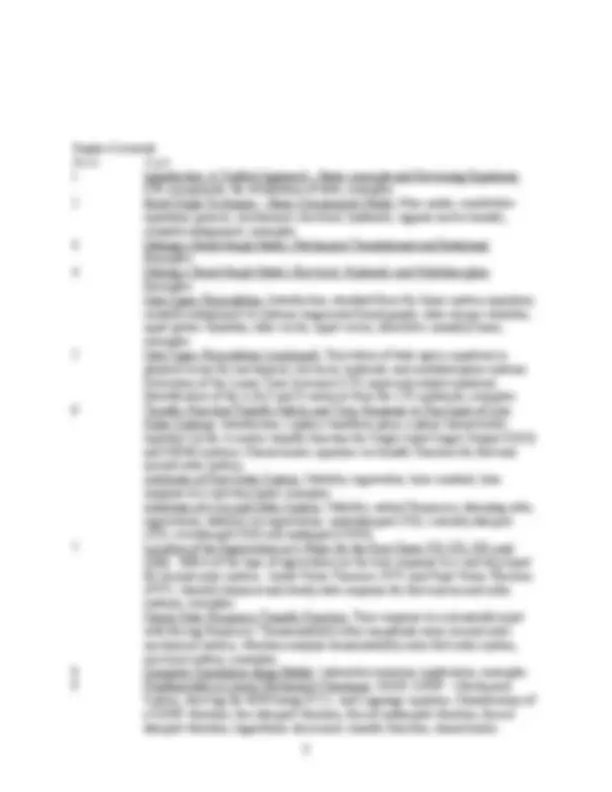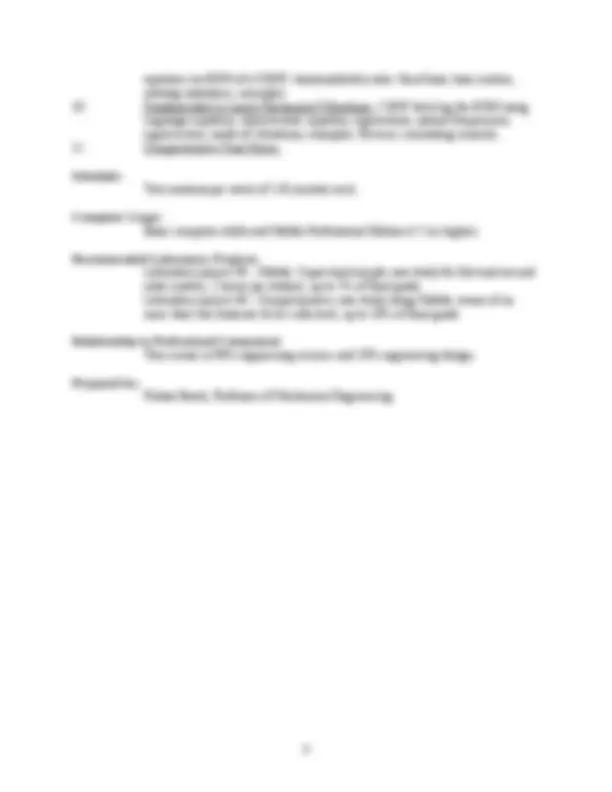




Study with the several resources on Docsity

Earn points by helping other students or get them with a premium plan


Prepare for your exams
Study with the several resources on Docsity

Earn points to download
Earn points by helping other students or get them with a premium plan
Community
Ask the community for help and clear up your study doubts
Discover the best universities in your country according to Docsity users
Free resources
Download our free guides on studying techniques, anxiety management strategies, and thesis advice from Docsity tutors
Material Type: Notes; Professor: Barak; Class: Dynamic Systems with Vibrations; Subject: Mechanical Engineering; University: Kettering University; Term: Unknown 2005;
Typology: Study notes
1 / 4

This page cannot be seen from the preview
Don't miss anything!



MECH-330 Dynamic Systems I
2005 Catalog Data: Credit: (4-0-4) Four-Lecture-Hours Prerequisites: MATH-204, Differential Equations & Laplace Transforms, MECH-310, Mechanics III, MECH-231, Signal Analysis for Mechanical Systems, OR EE-210, Circuits I, OR EE-212, Applied Electrical Circuits MECH-312, Design of Mechanical Components I Corequisites: MECH-322, Fluid Mechanics, MATH-305, Numerical Methods & Matrices OR MATH-307, Matrix Algebra
A study of mathematical modeling of mechanical, electrical, hydraulic and multidiscipline engineering system using bond-graph-technique, yielding state space equations. Derivation of the Equations of Motion (EOM) of single Degree of Freedom (SDOF) and 2DOF using Lagrange Equation and/or Newton Second Law (NSL). Determine transfer functions and frequency transfer function response for first and second order systems. A study of linear mechanical vibrations for SDOF and 2DOF systems, and of their vibration isolation. Determine characteristic equation, stability eigenvalues of systems. Develop computer code in order to simulate, analyze real engineering systems in the time and frequency domain using Matlab.
Textbook: Barak, P., Mathematical Modeling of Mechanical and Multidiscipline Systems , John Wiley & Sons, Inc.
References: Karnop, Dean C., Margoles, Donald L., and Rosenberg, Ronald C., System Dynamics – Modeling and Simulation of Mechatronic Systems, 3 rd^ Edition, John Wiley & Sons.
Thomson, William T. and Dillou Dableh, Marie, Theory of Vibration with Applications , 5th^ Edition, Prentice Hall.
Strum and Ward , Laplace Transform Solution of Differential Equations, Prentice-Hall
Kreyszig, Advanced Engineering Mathematics , John Wiley & Sons, Inc.
Coordinator: Pinhas Barak, Room 2-217 C.S. Mott Engineering & Science Center, (810) 762-7840, pbarak@kettering.edu.
Course Learning Objectives: Upon completion of this course, “Dynamics Systems I”, the student will be able to:
Prerequisites by Topic:
Corequisites by Topic:
equation via EOM of a SDOF, transmissibility ratio: fixed base, base motion, rotating unbalance, examples. 10 Fundamentals in Linear Mechanical Vibrations. 2 DOF deriving the EOM using Lagrange equation, characteristic equation, eigenvalues, natural frequencies, eigenvectors, mode of vibrations, examples. Review, concluding remarks. 11 Comprehensive Final Exam.
Schedule: Two sessions per week of 120 minutes each.
Computer Usage: Basic computer skills and Matlab Professional Edition 6.5 (or higher).
Recommended Laboratory Projects: Laboratory project #1: Matlab. Supervised simple case study for first and second order system; 2 hours per student, up to 5% of final grade. Laboratory project #2: Comprehensive case study using Matlab, teams of no more than two students (to be collected), up to 10% of final grade.
Relationship to Professional Component: This course is 90% engineering science and 10% engineering design.
Prepared by: Pinhas Barak, Professor of Mechanical Engineering